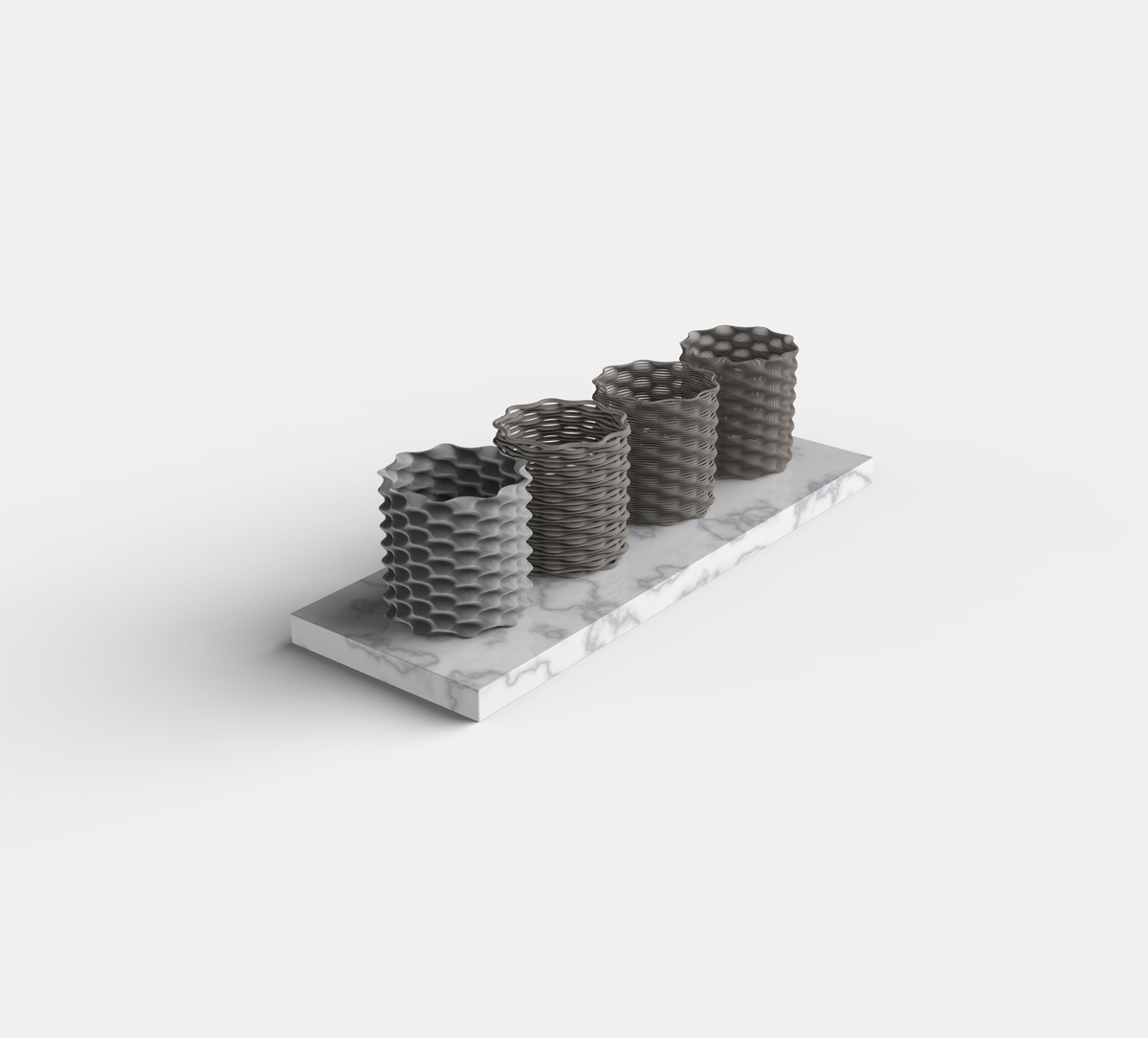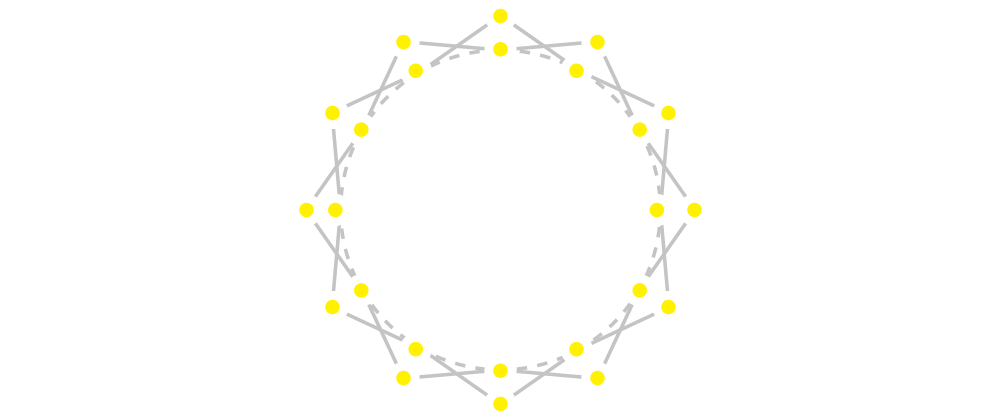3D Printed Ceramics
This is a small project I made last October. The idea behind this Grasshopper experiment was to create digital models that could emulate the forms I had commonly seen in ceramic 3D prints. I don’t have access to a ceramic 3D printer, so this would allow me to do the next best thing—Keyshot renders.
There was a lot of interest in playing around with the definition I made, so feel free to give it a try and let me know how your experiments with it turn out! The definition screenshot has also been uploaded below if you just want to skim and see how I did it (if you can make out anything past Squarespace’s compression and JPEG artifacts). There’s also a full explanation of how I broke up the steps underneath.
First, I create a circle and subdivide it into an even number of points.
I use Dispatch to get a list of only the even and odd points. I then translate each list of points the same distance away from the center.
Next, I use Polyline to link up the translated even points with the original odd points, and vice versa with translated odd points and the original even points. This gives us two star polygons.
I add fillets to round off the stars, making squiggle stars (please let me know if there’s a better name for this shape).
In order to make this three dimensional, I take one of the squiggle stars and offset it upwards, creating the first layer. Additional layers can be added on top by creating a linear array where the two squiggle stars are translated by twice the original offset.
These layers of curves are lofted together to give us a surface.
In order to get the individual “print layers”, Contour is used to get us cross sections of the surface at specific intervals.
Finally, these contour curves can be piped in order to make them look like extruded slip. In the definition this step is held behind a data dam, so it doesn’t process each and every single time, which can really slow down your computer.
The final step is quite finicky though, and for some reason sometimes there are a few curves that fail to pipe cleanly.
Reducing the squiggle size often solves this issue, and if only one or two layers fail, I replace them with a successful one from elsewhere in the model.
Pictured below: my initial sketch plan for how I’d go about doing this (it’s different slightly from the final direction I went with) . Started this on my hour and half commute home on a day I was feeling particularly motivated. Arranging this post together took so much longer than how long it took to just figure out the script.












![2019-02-23 17_37_10-Untitled - Rhinoceros 5.0 Educational - [Perspective].jpg](https://images.squarespace-cdn.com/content/v1/528f7950e4b048b3c8a45869/1550970400270-P3MBJYPH2MRV10X10355/2019-02-23+17_37_10-Untitled+-+Rhinoceros+5.0+Educational+-+%5BPerspective%5D.jpg)
![2019-02-23 17_38_33-Untitled - Rhinoceros 5.0 Educational - [Perspective].jpg](https://images.squarespace-cdn.com/content/v1/528f7950e4b048b3c8a45869/1550970508249-HICDYIEW0EDFVG6M30X7/2019-02-23+17_38_33-Untitled+-+Rhinoceros+5.0+Educational+-+%5BPerspective%5D.jpg)
